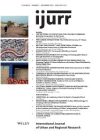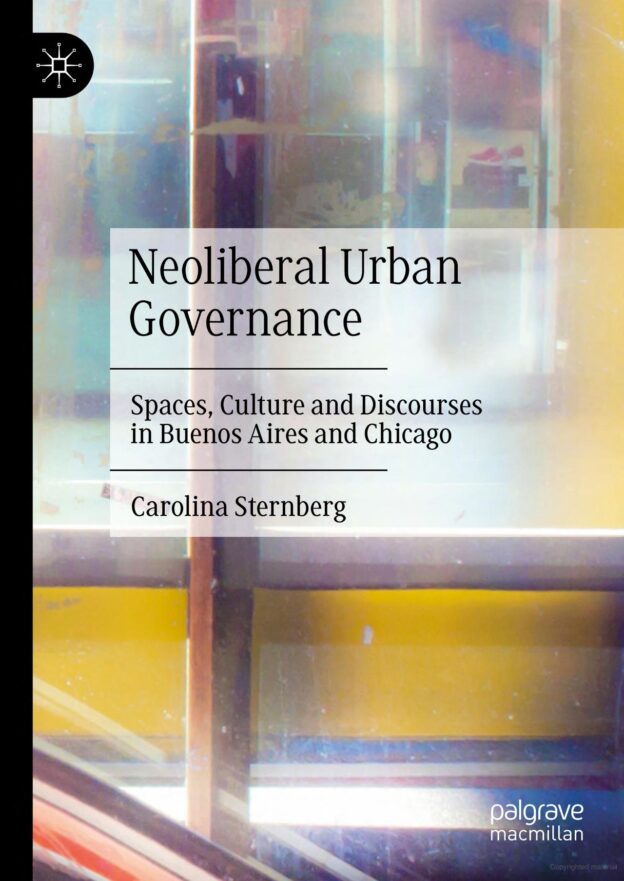In her new book, Carolina Sternberg examines the role played by neoliberal urban governance in bringing about the physical and social transformation of two major cities: Buenos Aires and Chicago. She shows how the boundaries of urban redevelopment in these two cities have moved into new and as yet uncharted territory: that of impoverished, racially segregated and deeply stigmatized communities. Sternberg deciphers the complex institutional processes, structures and arrangements through which urban redevelopment in these city spaces is currently being realized, arguing that ‘this new phase of redevelopment is not merely a decisive and determined urban project but the result of something humanly and adroitly crafted among an assemblage of actors: city officials, local boards, developers, architects and real estate agents’ (p. 3).
In other words, according to Sternberg, this latest phase of urban redevelopment is not simply about the production and rationalization of new public policies and procedures. Rather, it represents the materialization of a complex, multi-scalar discursive space in which the impoverishment, stigmatization and institutional neglect within these cities’ most deprived urban areas are viewed as obstacles to development. These must therefore be transformed in order to serve the cities’ ‘go-global’ agendas as they strive to become the next major locations for global tourism, culture and capital investment.
In the book’s introduction, Sternberg sets out the theoretical framework for her analysis, where she combines research on ‘cultural economies’, ‘neoliberal urban governance’, ‘gentrification-led redevelopment’, the ‘post-political turn’ in urban geography and ‘policy mobility’ into a coherent analytical-theoretical paradigm. She then dedicates three chapters to each city for a detailed empirical analysis of the redevelopment efforts taking place in a number of deprived and racially segregated community areas. In the final chapter, Sternberg draws out some general conclusions from her research that are particularly relevant for work on neoliberal urban governance in comparative urban geography.
This book provides a compelling and timely investigation into the workings of neoliberal urban governance and gentrification-led urban redevelopment, offering several key conceptual contributions to existing geographical research. First, it advances research on how discursive spaces centred around gentrification and displacement are crucial for moving the frontiers of urban redevelopment forward. For example, chapter 4 presents an in-depth investigation into the production of discursive spaces in Buenos Aires’ redevelopment efforts by focusing on the redevelopment of the informal settlement ‘Villa 31’. Sternberg shows how ‘at the center of urbanization of Villa 31, discursive spaces and new identities were actively shaped in a way that would highlight the virtues of urban transformation while obliterating any memory of a stigmatized space and identity’ (p. 71). Replacing the descriptions of Villa 31 residents as ‘criminals’, ‘drug addicts’ or ‘illegals’ with new, more ‘positive’ identities removed the stigma and allowed governance actors to extol the benefits of urban redevelopment and discourage local resistance to the redevelopment agenda.
Similarly, taking the case of Chicago, Sternberg shows how a new redevelopment rhetoric undergirds the efforts of city authorities to redevelop two Latinx communities on the city’s South Side—Pilsen and Little Village. This rhetoric seeks to ‘civilize’ these communities by presenting them as opportunity spaces for cultural consumption by tourists and locals alike. While Chicago’s city development has historically been guided along a ‘path to grow the city’s economy and achieving global status … through gentrification-led redevelopment’ (p. 106), Sternberg argues that the latest round of city development under (former) mayor Lori Lightfoot has been framed as both ‘inclusive’ and ‘equity building’, which ‘will benefit working-class … communities of color’ (p. 165). The author chronicles this shift in the discursive construction of redevelopment frontiers through a detailed analysis of policy discourses and statements from city officials, illustrating how a focus on redevelopment discourses is critical for understanding the current manifestations of neoliberal governance that are informing city transformations.
Building on these insights into the production of discursive spaces, Sternberg proceeds to offer an important analysis of how race and racialization undergird the frontiers of neoliberal urban governance and redevelopment in both Buenos Aires and Chicago. In Chicago, for example, residents in Pilsen and Little Village are framed by the city authorities as ‘bearers of an authentic ethnicity’ or as ‘ethnicity-infused beings’, incorporating a distinctive ethnic world. In addition, they have become caricatures as ‘“authentic”, “rooted”, and “proud Mexican Americans”, determined to preserve their ethnicity’ (p. 141).
Here, according to Sternberg, race and ethnicity do immense political and economic work for the city authorities, because they frame urban redevelopment efforts as being designed to build equity and community identification, bringing inclusive and progressive economic development which will benefit poorer communities. At the same time, however, such a post-political redevelopment rhetoric conceals that, at its core, urban redevelopment in both Chicago and Buenos Aires continues to be dictated by gentrification, white middle-class privilege and, ultimately, the displacement of Latinx working-class residents—despite the promises of equity building and inclusive development.
What perhaps stands out most from this contribution to existing research is the author’s ability to merge detailed and nuanced descriptions of the histories of urban change in Buenos Aires and Chicago with theoretical insights on neoliberal urban governance. Anyone wishing to learn more about the history of urban redevelopment’s changing frontiers in these cities and within their most impoverished communities—including how residents have sought to resist gentrification-led redevelopment efforts—will find this book to be an important resource. The book is equally relevant for anyone interested in comparative urban geography, because it deciphers how comparative urban research can be conducted empirically and conceptually across two very different cities.
In the final chapter, Sternberg summarizes the similarities and differences in neoliberal urban governance between Buenos Aires and Chicago. While both cities are similarly remaking city space by rhetorically emphasizing the value of multi-ethnic and multi-cultural histories and biographies, their respective neoliberal urban governance arrangements work differently in the production of space in deprived communities of colour. Whereas Chicago’s urban governance has been particularly characterized by strong ties between public and private actors, Buenos Aires has prioritized the centralization of urban policies and planning within government. By drawing out these similarities and differences, Sternberg offers a detailed and important analysis of the way neoliberal urban governance continues to change city spaces across geographical contexts and histories.
Tilman Schwarze, University of Glasgow
Carolina Sternberg 2023: Neoliberal Urban Governance: Spaces, Culture and Discourses in Buenos Aires and Chicago. Cham: Palgrave. Cover used with permission of Palgrave.
Views expressed in this section are independent and do not represent the opinion of the editors.

